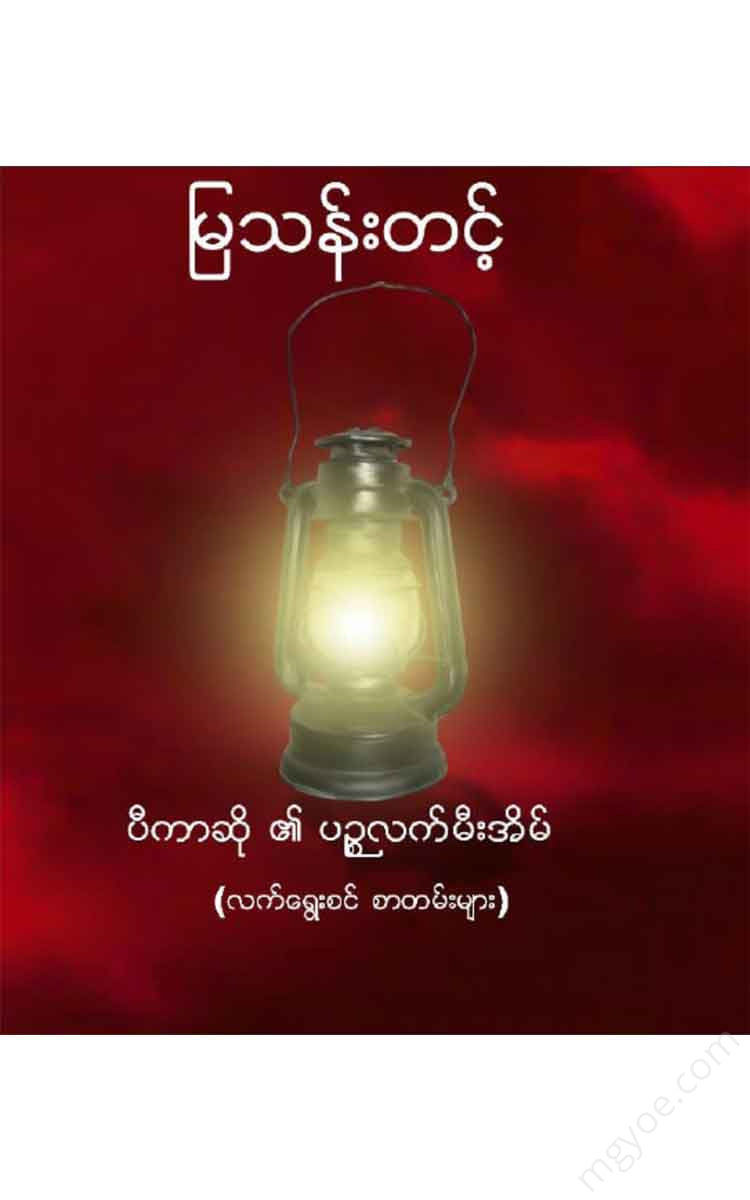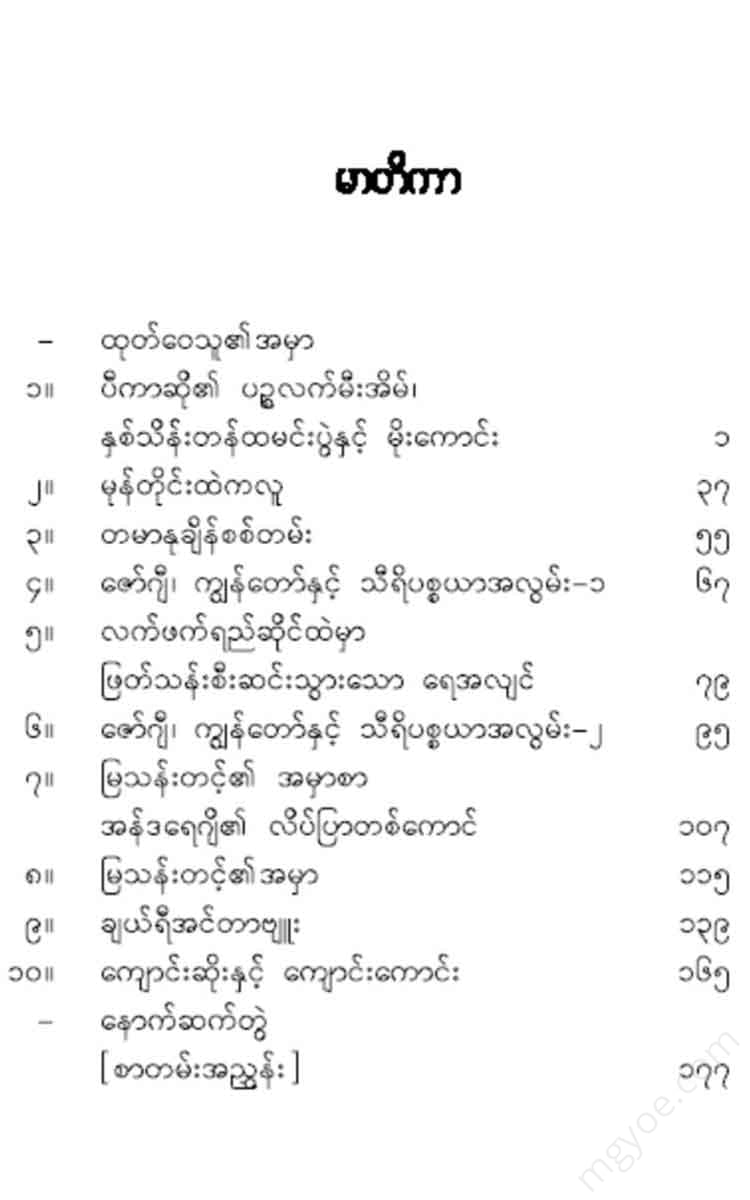Other Websites
Mya Than Tint - Picasso's Five-Handed House
Mya Than Tint - Picasso's Five-Handed House
Couldn't load pickup availability
Picasso's magic lamp, a two-hundred-thousand-tonne dinner, and good weather
A picture of a beggar, a piece of paper lying on a marble table, a picture of cigarette butts on a train station platform...
In the morning, the train passed Mae Za. Under the thick snow, I could barely see the small Mae Za station. The train was slowly cutting through the snow with the sound of the siren. It was past 7 in the morning and the sun had not yet risen. I remembered the poem by Letwe Sundara, “The train is still moving, the sun is still shining, it is too cold.” I remembered the poem by Letwe Sundara, “The train is still moving, the sun is still shining, it is too cold.” I remembered that Burmese scholars once argued whether it meant that the sun was cold or that the people were cold. I don’t know whether the sun was cold or not. The people were shivering. The winter in Kachin State is bone-chillingly cold.
The train was full of people. Since leaving Mandalay yesterday evening, the Myitkyina-Myitkyina train had been overloaded. The carriage we were in was an upper class carriage. We didn’t want to ride in an upper class carriage. Even though the upper class carriage was comfortable, it was too private. We didn’t feel the full enjoyment of traveling. We didn’t see people. It was too private. However, the people who invited us had bought upper class tickets. Since there were women, they were also treated with respect. So we had to follow their plan. It was not our own plan to travel, it was the plan of the host. I was the guest. He was the host, and we were one of them. The host was the Moe Kaung Sasodaw Day Celebration Committee.
I last visited Kachin State in 1960. At that time, I was with Dagon Thara. We traveled by car from Moehnyin, Nam Ma, Belu, Myitkyina, Myitsone, and Myitkyina to Bhamo. The car stopped at the border between Myitkyina and Bhamo for a while and we walked around. The bridge between the two districts was broken, so the car swerved sideways and we walked down.
"This is our border. The mountains over there are on the Chinese side. It's not that far. It's only a mile away."
Ko Than Aung from Moehnyin told us. At that time, a large Myanmar delegation of over three hundred members was in China to commemorate the successful completion of the Sino-Burmese border demarcation. The people of both countries were relieved that the two countries had been able to resolve the remaining issues from the colonial era in a friendly manner.
If you cross the river, you will reach the town of Tarbin. The water is as clear as crystal. It is cool. When you arrive in Bham Mauk, you will visit the Bham Mauk market. Kachin, Shan, Rawan, and Yoyin people are all different. Mustard pickles, Suam Tan, oil tofu, Kachin alcohol, a whole market.
I wanted to go to the famous hot spring, but I didn’t have time. We took a boat from Bhamo to Katha. We crossed the famous First and Second Narrows. The boat was small in the river. It was like a watermelon rind floating. I think the high banks must be more than two hundred or three hundred feet high. The rocky banks were white and red. The vines were like big snakes crawling together. I ran to remember the Kachin State background stories by Shwe U Daung and Maha Swe that I had read when I was young. The boat didn’t dock in Htei Chein, Shwe Ku and other towns. Htei Chein port was a big beach. At the end of the beach, I could see houses and rustling roofs in the dark forest. I ran to remember a writer named Htei Chein Nat Soe who used to write for the Progress Magazine before the war. I never met him in person. I didn’t see him anymore. I can't say whether it exists or not.
From Katha, we headed back to Nabhar Road and took the train to Mandalay.
The passengers at that time were Dagontara and I. 1960.
This time, there were four of us: Khin Swe Oo, Yuwady Shwewa Sein, Maung Thway Thit, and I. 1975.
Even fifteen years have made a difference. Fifteen years is not a long time in historical terms. In terms of human lifespan, it has been almost a generation. When we went last time, the 10-year-olds would be 25 now. After that trip, I wrote two short stories for Ngwe Tari magazine. One is about a ten-year-old Kachin boy named “Manaw.” Article by Khin Lay Myint from the Kachin State Gazette
I wrote about a student at the Kachin National Orphanage in Myitkyina that I visited with some of them. The Kachin national child's name is Ma. .
Before coming to the orphanage, he had studied at the village school. I asked him if there was a school in his village. He said there wasn't, but he could go to school from somewhere else. How far was it?
"It's almost there. If you cross ten mountains, you'll reach it."
Manaw answered. Manaw's words stuck in my ears. The journey to school, crossing ten mountains, was no small one. It was a round trip across twenty mountains. The mountains were also very high. It was not a one-day affair. It was an everyday affair. He looked like a ten-year-old child.
I was tired of looking at Manaw. How far has Manaw come now? He must be about 10 years old. What about Manaw's younger siblings? I wondered if he was still in school, even though he was over 10 years old.
Another novel is “The Mirage” and was published in Ngwe Taree Magazine. In Bhamo, the two of us lived in a Chinese restaurant. The room rate was two kyats a day, and we ate our meals downstairs. One evening, while we were eating downstairs, a man came to greet me. He was a student who had lived in the same dormitory as me when we were at university after the war. His name was Peter Lay Maung. He drove a car at school. He was very wealthy. The evening twilights in Inya and (Siri) guest houses used to echo with his laughter. The dark shadows of the forest around the boat club used to hear his whispers. On moonless summer nights , I could hear the sound of an electric guitar from the corner of the street | from the brick bridge. He used to play the song from the American musical film “The Day of the Rising Sun”.
He didn't need anything. Cars, Western clothes, good food, electric guitars, Inya people and their blue eyes and smiles. He didn't need any worries, he was a cute little prince. I don't know what happened next. He was expelled from school for stealing a student's belongings. I haven't seen him since then. They broke up around 1950 (they met again in Bhamo in 1960). He wasn't a cute little prince.
I met a Shan Kachin woman and was stranded in Bhamo. She was a letter-breaker, a mat-picker, and a box-turner. I wanted to write about the sad world around her, so I wrote “The Mirage.” I also read a short story by Sun Mar Sam Mon that was similar.
Now, I don't know where my character Peter from "The Mirage" is. Has he become a heroin addict after going from being an opium user?



